

CONTENTS
PREFACE
I t's 4:30 on a cold, damp November morning. I'm stumbling downstairs to the kitchen, my eyelids still at half-mast, when I'm suddenly overcome by a feeling of impending doom. I know something isn't right, but I can't put my finger on the problem. Then, right before I take my first sip of coffee, it hits me:
It's leg day.
In a little over an hour, I'm going to have a couple hundred pounds of iron across my shoulders as I squat up and down like a Jack who can't decide whether he wants to be in or out of his box. It's not enough that I drag myself into the weight room at this unholy hourI have to do the heaviest, ugliest exercises when I get there. Hey, maybe when I'm done I can walk barefoot over molten lava, or shave with a cheese grater.
A short while later, as the second cup of high test kicks in, the morning haze lifts from my brain and I start thinking more clearly: No one is forcing me to do this. This whole waking-up-before-dawn business is entirely self-inflicted. I could just as easily hit the snooze button a few dozen times, or not even set the alarm at all.
But I don't. Sure, I bag my workout every now and then, and go back to bed. That's usually when I'm sick or coming off a poor night's rest. Most days, I'm in my gym no matter what.
I know what you're probably thinking right now: This guy's a trainer. It's his job to stay in shape. Fair point. There's no doubt that the shape I'm in says as much to my clients as my resume does. A big part of my credibility is tied up in my appearance. Who's going to take fitness advice from a fat trainer?
There's more to my workouts than income enhancement, though. I could sleep in more often than not and still look like a competent trainer. What gets me up in the morning is the challenge. I like to set goalsa 300-pound bench press, a 30-inch waist, a microscopic body-fat percentageand then achieve them through hard work, no shortcuts allowed. I like getting stronger and leaner each year while most American males are getting weaker and fatter. Most of all, I like knowing that someday I'll be able to carry my grandchildren up a flight of stairs as easily as I now carry my two young daughters.
Believe it or not, there's a reason I'm telling you all this about me: I want you to think about what motivates youor what will motivate you if, like most North Americans, you aren't currently exercising enough to get any real benefit. Is it the fear of going up another waist size and having to buy new pants? The embarrassment of going to your high school reunion 20 pounds over your fighting weight? A doctor's order to knock your cholesterol level down a hundred points?
Maybe you're more like me, already in decent shape but having trouble pushing yourself toward the next horizon. You know that Mr. Foot remembers how to push Mr. Accelerator. You just aren't sure how hard you want to press.
In my opinion, this is a bigger dilemma for guys who work out at home than for guys who go to gyms. At the gym, there are plenty of motivated lifters. Some are aiming for the biggest bench press, some for the biggest arms, some for the smallest waist. Some don't seem to have any goal other than to spend as much time as possible surrounded by iron. But a silly goal is still a goal. And when you're surrounded by guys who are working toward something, it's easier to take in their goals by osmosis, if not outright intent. Just by emulating a guy who's trying to get superior results, you'll probably make more progress than if you trained at home alone in your garage.
Trouble is, you do train at home alone in your garage. Where does that leave you?
Well, you have an automatic excuse for any outcome, no matter how far short of your goals you fall. It's a Get Out of Jail Free card for failed exercisers. Tell someone you lift weights at 5:00 A.M. while staring at your lawn mower and a couple of bags of fertilizer, and he'll understand if you never get results.
There's another way to look at this: If you succeed under those circumstancesand success probably involves finding another spot for either your weights or your fertilizeryou've achieved more than the guy who builds his body at the local sweat palace. While the two of you could have equal strength and physique development, in this case, the tie goes to the guy who trains at home. You know more about exercise than the gym member does, because you've had to accomplish the same results with less equipment. You know yourself better than he does, since you've tested your body and mind under adverse circumstances and know what turns your gears.
More than anything else, though, you understand what this fitness thing is really about. You know it's more than a big bench press or how you look at the beach. You know it's as much about how you feel as how you look.
I'm not downplaying the aesthetics. I want the bulging biceps and the six-pack just as much as the next guy does. Nevertheless, I think there's a point at which, to paraphrase Dennis Miller, the banal takes a back seat to the consequential. Neither you nor I walk into the weight room each morning with the idea that we're going to stave off heart disease, increase self-confidence, or sleep better at night. We just know we feel better when we exercise than when we don't. Not just betterwe feel right. We feel strong, motivated, disciplined. After a particularly good day with the iron, maybe we even feel tough. Tougher than the guys who hit the snooze button, anyway, or the guys who put away a six-pack and a bag of Cheetos while watching Friends reruns. And since we accomplish all this while exercising at home, with the fridge and the TV beckoning from just a few feet away, maybe we feel tougher still.
It's not instant gratification, but it's profoundly gratifying.
 Michael Mejia
Michael Mejia
ACKNOWLEDGMENTS
A book of this size and scope requires a lot of people to pull together. It helps if two or three of them are sane. We got lucky and assembled a team of mostly lucid individuals, all of whom were asked to make their contributions on very short notice. Among the players:
- Writer Kelly Garrett, with whom I actually share a history in fitness journalism, although neither of us realized it until we worked together on this project. Kelly wrote the original drafts of many of the following chapters. If you see a sentence you like, he probably wrote it.
- Joan Price and Mark Anders, who contributed information and expertise to the exercise-video and exercise-equipment chapters, respectively.
- Photographers Mitch Mandel and John P. Hamel, who shot hundreds of quality photos in the time most photographers shoot dozens.
- Model Jason Cameron, who cheerfully held heavy weights and contorted body positions so Mitch and John could shoot those hundreds of pictures. Jason, besides being a model and actor, is also a personal trainer certified by the National Strength and Conditioning Association, and ended up being a full-fledged participant in the book as he helped us get the exercise images right.
- Men's Health assistant fitness editor Adam Campbell, who supervised the photo shoots by day and performed his writing and editing duties for the magazine on his evenings and weekends.
- Australian strength coach Ian King, C.S.C.S., our favorite trainer in the entire Southern hemisphere, whose ideas we borrowed from liberally in putting together our exercise programs.
Next page

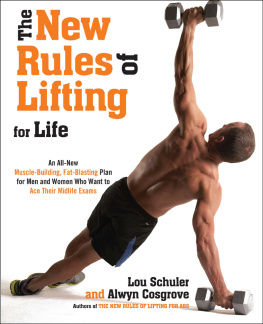
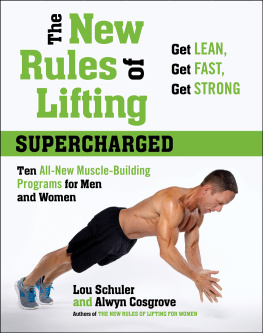
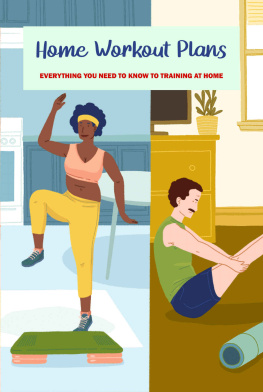

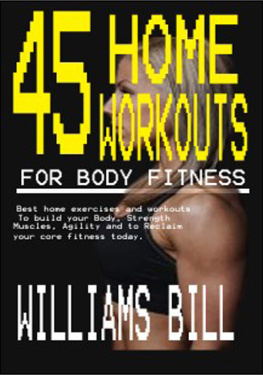
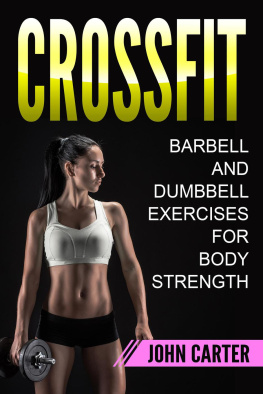


 Michael Mejia
Michael Mejia